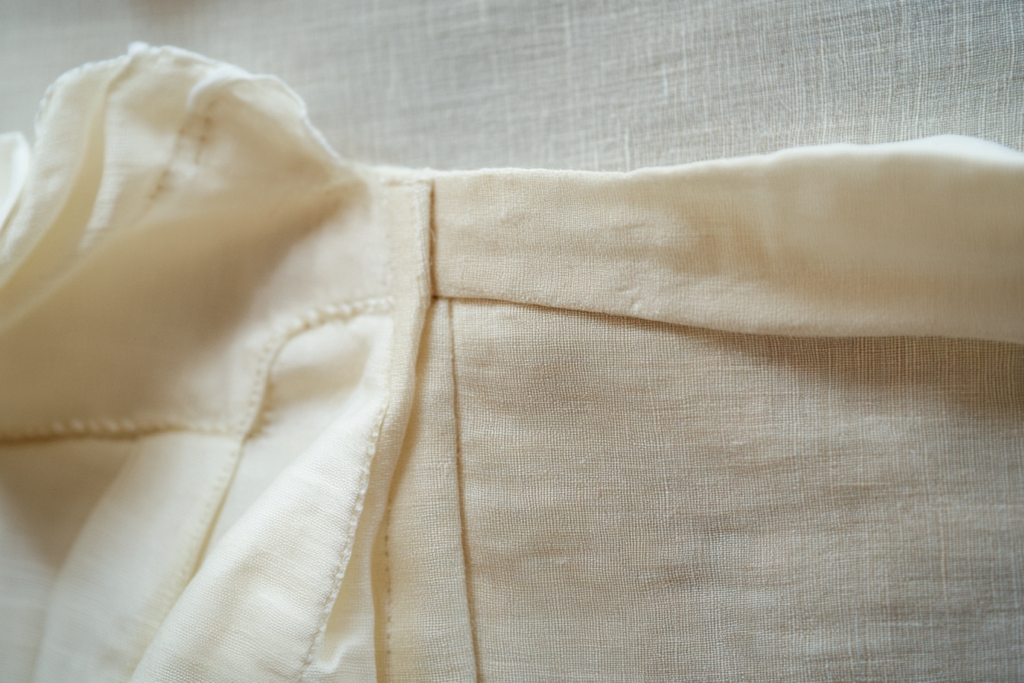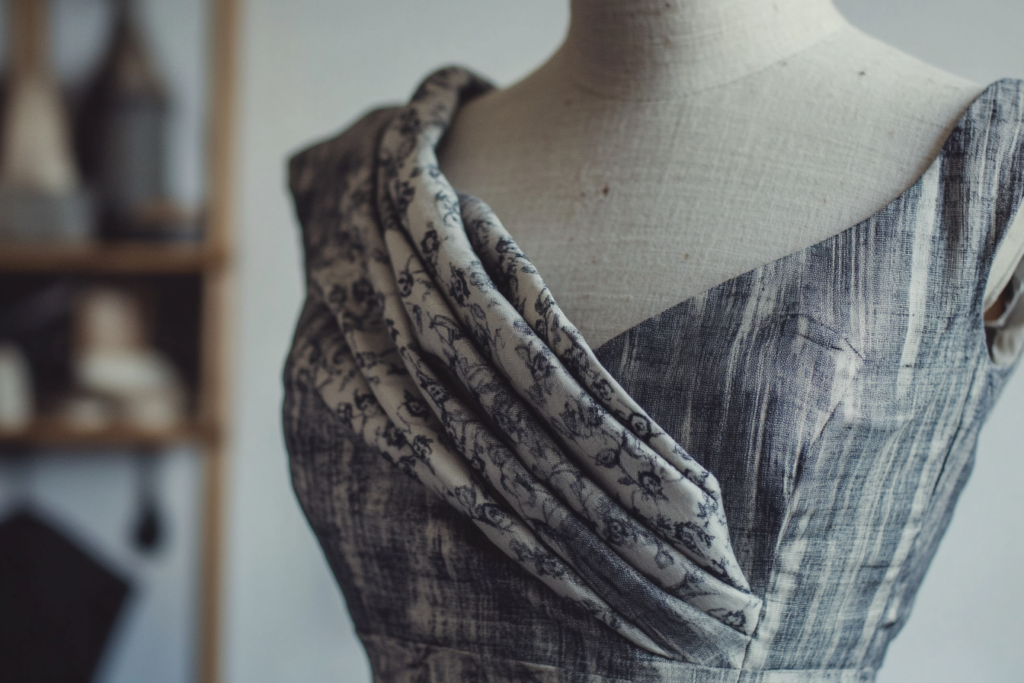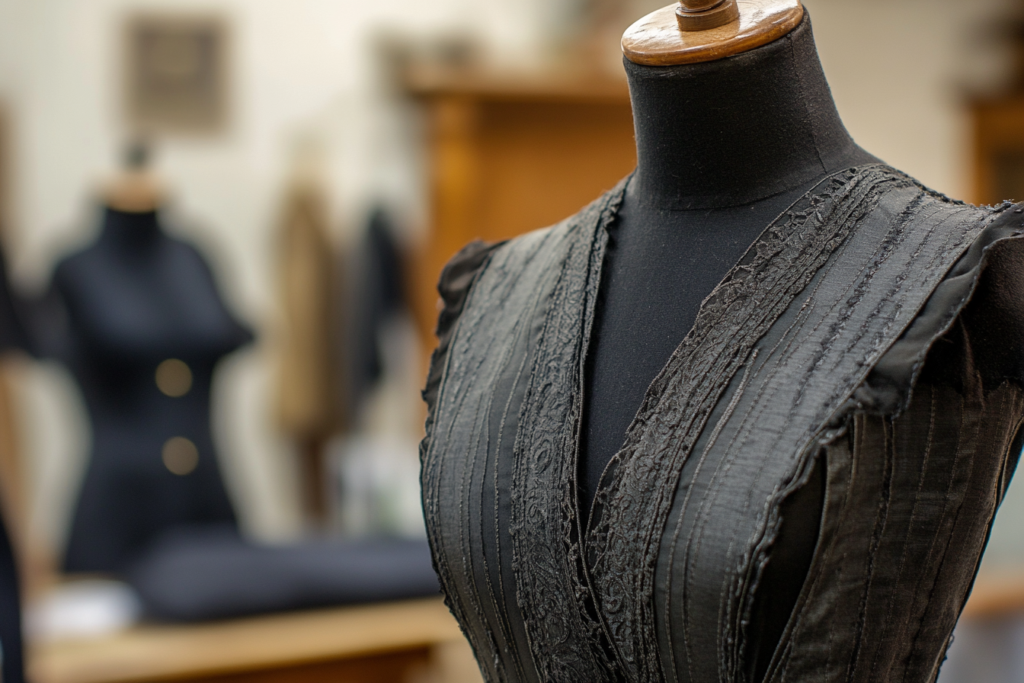French Darts: A Stylish Shaping Technique in Garment Design
Meta Description: French darts are a flattering shaping technique placed on the side seam. Learn how French darts create a refined silhouette for dresses and tops.
What Are French Darts?
French darts are a classic shaping technique used in fashion design, commonly seen in dresses, blouses, and other fitted garments. The dart is placed on the side seam, starting a few inches above the waist and sloping gently towards the bust. This unique placement allows for a softer, more flattering fit compared to traditional darts, giving garments a more sculpted and feminine silhouette.
Unlike conventional darts, which often appear more structured and visible, French darts are subtle and provide a natural curve to the garment. This makes them a popular choice for designs that require delicate, refined shaping, without the harsh lines that some other dart placements might create.


How Do French Darts Work?
French darts are crafted by manipulating the fabric along the side seam to provide shaping and contouring to the body. These darts start from a higher point on the garment, usually several inches above the waist, and curve downward to end just near the bust area. The design helps the garment smoothly follow the lines of the torso while allowing for freedom of movement.
The placement and shape of French darts are crucial to their elegant effect. They typically provide more fluid and gradual shaping, creating a softer fit that compliments the body’s natural curves. This makes them ideal for lightweight fabrics and garments that need soft drape and movement.
Why Use French Darts in Garment Design?
- Flattering Fit: French darts create a smooth and feminine shape by providing controlled shaping in the waist and bust area. They work well for garments that need to accentuate the natural curves of the body without feeling too tight.
- Elegant Silhouette: The subtle curve of the dart gives garments a refined, elegant look, especially when used in dresses and blouses. Unlike more rigid darts, French darts don’t create noticeable seams, allowing for a smoother finish.
- Versatile Application: French darts are suitable for a variety of fabrics, from silk and chiffon to cotton and tweed. They work equally well for casual and formal designs, making them a versatile addition to any designer’s toolkit.
- Minimalist Design: The invisible nature of the dart on the exterior of the garment makes French darts ideal for minimalist designs where clean lines are crucial. Their subtlety allows the garment’s overall aesthetic to shine without distraction from harsh lines.
- Improved Movement: Unlike traditional darts, which can restrict the garment’s flow, French darts allow for greater ease of movement, making them a comfortable yet stylish option for form-fitting designs.
How to Sew French Darts
Sewing French darts requires precision and attention to detail, as the dart’s placement and shape are key to achieving a flattering fit. Here’s a step-by-step guide to sewing French darts:
- Mark the Dart Placement: Begin by marking the dart on the fabric, making sure it starts several inches above the waistline and curves toward the bust area. Use a fabric marker or tailor’s chalk to indicate the dart’s beginning and end points.
- Pin the Dart: Pin the fabric along the dart lines, ensuring that the side seam aligns properly. The fabric should be smooth and taut, but not stretched.
- Sew the Dart: Sew the dart starting from the top of the marked line, gradually curving toward the bust. Make sure the stitching follows the natural curve of the dart. It’s essential to sew the dart with a smooth, consistent curve to maintain the fluidity of the shape.
- Press the Dart: Once the dart is sewn, press it gently to set the shape. For French darts, pressing the dart toward the side seam is recommended. Be careful not to flatten the fabric; instead, ensure the dart remains smooth and well-defined.
- Finish the Seams: After pressing, finish the raw edges of the side seam to prevent fraying. This can be done with a serger, zigzag stitch, or by using bias tape.
French Darts vs. Regular Darts
While both French darts and regular darts serve the same basic purpose of shaping a garment, their placement and effect are different. Here’s a comparison:
| French Darts | Regular Darts |
|---|---|
| Placed on the side seam, starting above the waist and ending near the bust. | Typically placed in the center of the garment, usually on the bust or waistline. |
| Soft and curving, creating a smooth, feminine shape. | More pronounced, often creating a more angular shape. |
| Ideal for lighter, drapey fabrics and elegant silhouettes. | Often used for more structured fabrics and garments. |
| Minimal, refined shaping without visible dart lines on the outside. | More visible, creating a defined line in the garment. |
French darts offer a softer, more graceful alternative to regular darts, making them perfect for garments that require a refined, elegant finish. They are especially useful in designs where a subtle fit is needed, without the harsh lines that traditional darts can create.
Best Fabrics for French Darts
French darts are most effective when used with fabrics that have a soft drape. The fluidity of the fabric allows the dart to mold the garment smoothly without creating rigid, bulky seams. Ideal fabrics for French darts include:
- Silk
- Chiffon
- Cotton lawn
- Taffeta
- Wool crepe
- Tencel
These fabrics allow the French dart to achieve its full potential by creating natural curves that flatter the body’s shape. Stiffer fabrics like denim or canvas may not work as well, as they could result in awkward or bulky darts.
Applications of French Darts in Fashion
French darts are commonly used in designs that require elegant and soft shaping, including:
- Dresses: For form-fitting dresses, French darts help create a smooth, feminine silhouette, perfect for occasions where elegance and grace are important.
- Blouses and Tops: In blouses, French darts provide subtle shaping around the bust and waist, making the garment more flattering without being overly tight.
- Jackets and Coats: When used in outerwear, French darts can provide a sophisticated fit, ensuring that jackets and coats have a tailored yet comfortable look.
French darts add a touch of classical charm to garments, making them a timeless technique in both contemporary and vintage-inspired fashion.
Conclusion: The Elegance of French Darts in Garment Construction
French darts are an understated yet essential technique for creating beautifully shaped, feminine garments. By starting at the side seam and curving gently toward the bust, they provide a smooth, elegant silhouette that enhances the natural curves of the body. Whether you’re designing a refined dress, blouse, or tailored jacket, French darts offer a soft and flattering fit, making them a go-to shaping method for many designers.



